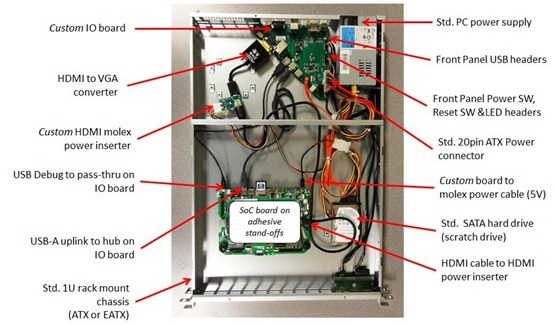Microsoft reveals Windows On ARM will bind developers

Microsoft has given details of the first version of Windows to be tailored to ARM-based chips, revealing that the OS will have a number of restrictions for app developers.

Layout inside a Windows On ARM device. Image credit: Microsoft
On Thursday, Windows president Steven Sinofsky described in a blog post how Microsoft is developing for Windows On ARM (WOA). He outlined the changes it is making to support the processor family and its associated devices, which are new to Windows, via a common WOA foundation and Windows binaries running on platforms from ARM licensees Nvidia, Qualcomm and Texas Instruments.
WOA is "a new member of the Windows family, built on the same kernel, sold as part of the Windows ecosystem for a new class of PCs and a new set of partners," Sinofsky told ZDNet UK in a phone interview.
Devices running WOA will be integrated products built from the ground up for Windows, with support for low-power and new hardware capabilities, including connected standby, according to Microsoft. The company did not say specifically what kinds of devices these will be, but it has strongly hinted at times that they will include tablets and perhaps hybrid keyboard-touch devices.
Sinofsky was reluctant to call the OS an ARM version of the upcoming Windows 8 update. "It’s not a number; it's just WOA," he said. "It's a member of the family — like Server, like Embedded".
Asked about the difference between Windows 8 and WOA, Sinofsky again stressed that the OS is not an offshoot, but an extension of the software maker's development process.
"What we're doing working across multiple ARM platforms is unprecedented," he said. "It's just a new capability, a new level of device, and it's giving the ability to meet the consumer demand for a device that is reliable and performant all over time."
Developer restrictions
In the blog post, Sinofsky clarified the status of the Windows Desktop on ARM hardware, along with restrictions on how developers can get apps onto WOA devices. Third-party developers will be only able to create Metro-style applications for ARM, using the WinRT APIs unveiled at Microsoft's Build conference in September; they will not get access to Windows Desktop.
Microsoft did not disclose whether there are any technical or other reasons for the restriction. However, the company is generally encouraging developers to move to Metro-style apps and WinRT. In addition, it makes sense for Microsoft to limit the new platform to the new APIs and not give itself the overhead of also supporting legacy Win32.
While Windows Desktop will be present on WOA, it will only support a limited number of Microsoft applications. These include familiar Windows tools such as the Explorer file manager and the upcoming Office 15 release, all of which have been tuned to support touch input and ARM's low-power modes.
Microsoft plans to bundle its own Metro-style applications on ARM devices, including Mail, Calendar, Photo Gallery, Storage and a set of media players. All applications — including those from third-party developers — will be delivered from Microsoft's app store or via Windows Update, with no other ways to install code.
"All the updates — whether it's for firmware, drivers or apps — will only
come through the Windows Update or Microsoft Update infrastructure and
the store," Sinofsky told ZDNet UK. "There's not a side-loading of x86-compatible code or anything
like that. There's no other way to get compiled code on the product
other than through the store."
Asked as to when end users would see WOA, Sinofsky noted that the upcoming Windows 8 Consumer Preview will only be for Intel and AMD hardware. He did note that some hardware partner companies will be using a limited number of development ARM devices to build and test WOA peripherals, device drivers and applications.
"[They're] much like the ones we've been showing in demos," Sinofsky told ZDNet UK. "They're not the form factors the consumer will see — not that level of industrial design. They're hardware prototypes."
The plan is for WOA to launch at the same time as desktop Windows 8, which is expected to arrive in the third quarter of this year. While there will be a beta for the x86 version of the OS update, WOA will not, and will only appear when bundled on devices.
"All PC manufacturers are... hard at work building brand-new devices from the ground up that are designed to be great and exclusively for WOA," Sinofsky said.
Get the latest technology news and analysis, blogs and reviews delivered directly to your inbox with ZDNet UK's newsletters.